If you’ve never cleaned a horse’s sheath, you probably have questions. First and foremost, is it really necessary? And more importantly, how exactly do you clean a horse’s sheath?
You’ll be glad to know once-a-year sheath cleaning is sufficient for most male horses. This not only keeps them comfortable, but also allows anything abnormal to be found and addressed.
As for the how, we’ve got you covered step by step, so read on.
Quick Anatomy Lesson
Whether gelding or stallion, every male horse has a penis and sheath. Unless he “lets down” to urinate or is sexually aroused, his penis is retracted inside the sheath.
Muscles keep the retracted penis protected by a loose double fold of skin called the prepuce. The external part of the prepuce is known as the sheath.
To reduce skin-on-skin friction when the penis extends and retracts, lubrication is provided by an oily substance called sebum, which is secreted by the sebaceous glands.
As sebum combines with dirt, exfoliated skin cells, dirt, natural bacteria, and moisture, it forms a thick, waxy substance known as smegma. It can vary in color from creamy to gray or black.
Why Do You Need to Clean a Horse’s Sheath?
If you never know the normal appearance of your horse’s sheath and penis, you may not realize if something changes.
Male horses can develop cancers—sarcoids, melanomas, and squamous cell carcinoma—on the penis and sheath. Habronemiasis, aka summer sores, can also occur in this area.
“The majority of the time, horses aren’t walking around with the penis extended, so unless you make it a point to clean the sheath, you won’t see if there are any changes,” says Melissa J. Prell, DVM, M.S., DACT, director of the Advanced Fertility Center at Peterson Smith Equine Hospital in Summerfield, Fla. “Even more important than cleaning is monitoring the overall health of the horse, and this includes the reproductive tract.”
Signs a Sheath Cleaning is Needed
“People often associate the existence of smegma as unhygienic, but it’s a normal process for horses to have smegma,” says Prell. “Some horses are dirtier than others; it doesn’t necessarily mean something’s wrong. Horses roll in dirt, sand, and shavings, and skin sheds naturally, so all of this accumulates in the dark, waxy appearance of smegma.”
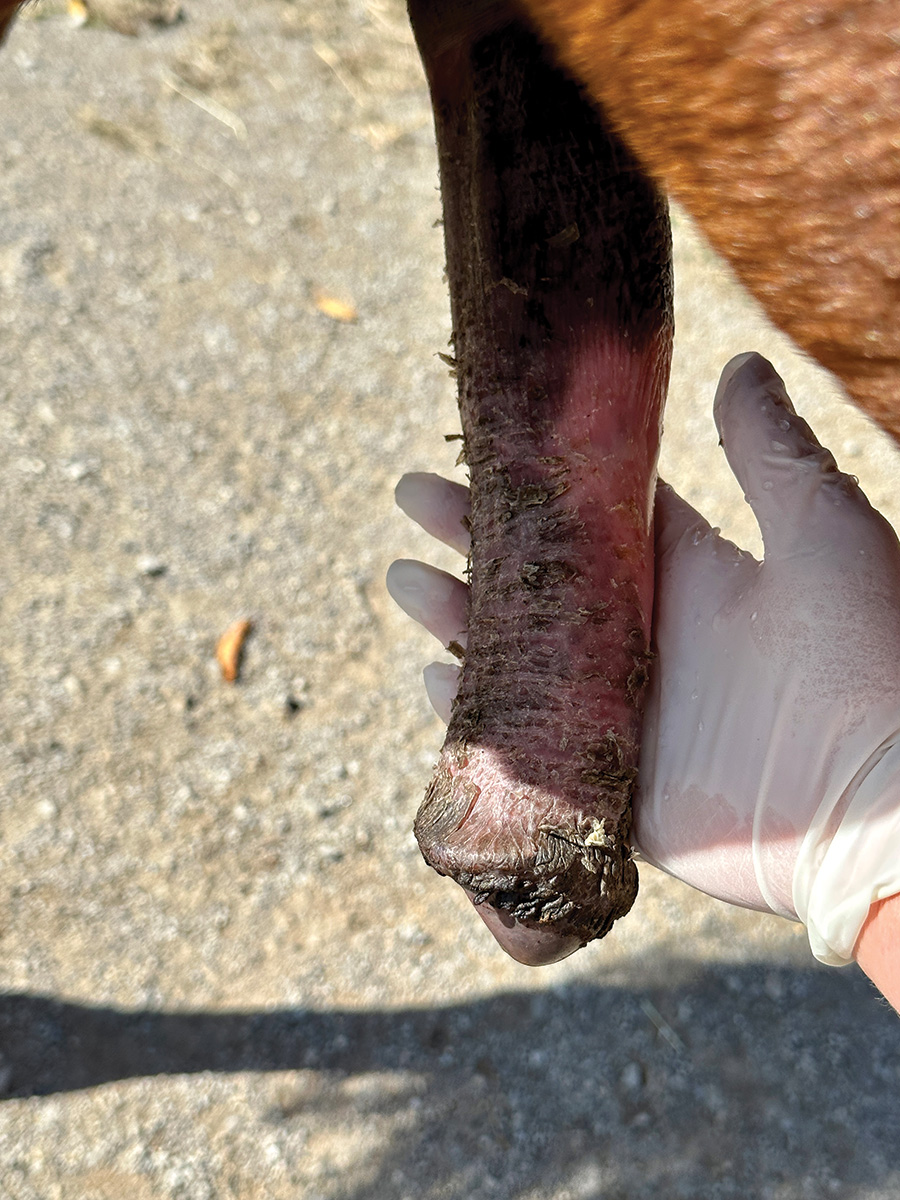
The following signs may indicate your horse has excess smegma and needs his sheath cleaned:
◆ Visible smegma on the outside of the sheath, hind legs or belly near the sheath
◆ Penis looks dirty when visible
◆ Change in urine stream
A Heads-Up for Mare OwnersSmegma isn’t a concern with mares, but dirt, sweat and dead skin cells can still build up between the teats and around the udder. To keep your mare from becoming irritated or harboring bacteria, you’ll want to periodically use warm water and mild dish soap to gently clean this area when grooming or bathing. |
What is a “Bean?”
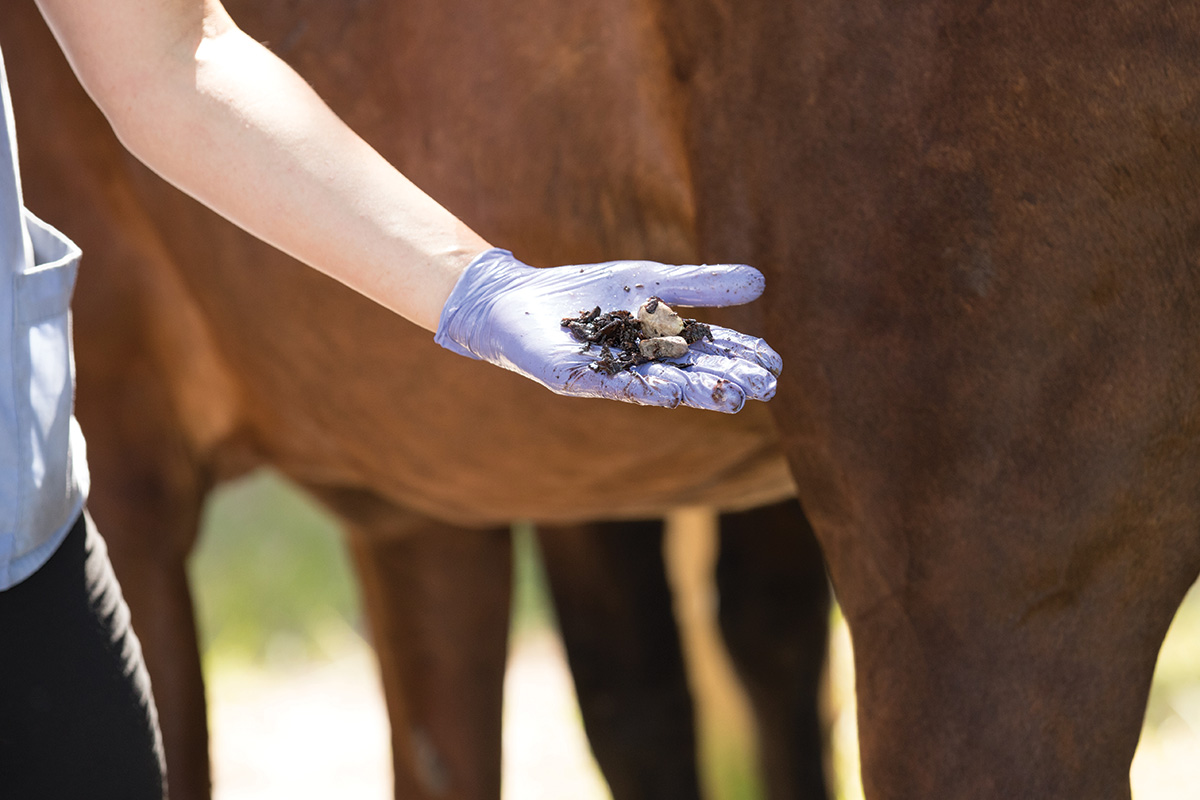
Sheath cleaning and beans are often mentioned together.
A bean is the firm accumulation of smegma that can form at the end of the penis near the urethral opening in a depression known as the urethral fossa.
So named because of their shape, beans can vary from the size of a pencil eraser or lima bean to as large as a walnut.
“Some horses form more of a bean than others, depending on how dirty and waxy their smegma is,” says Prell.
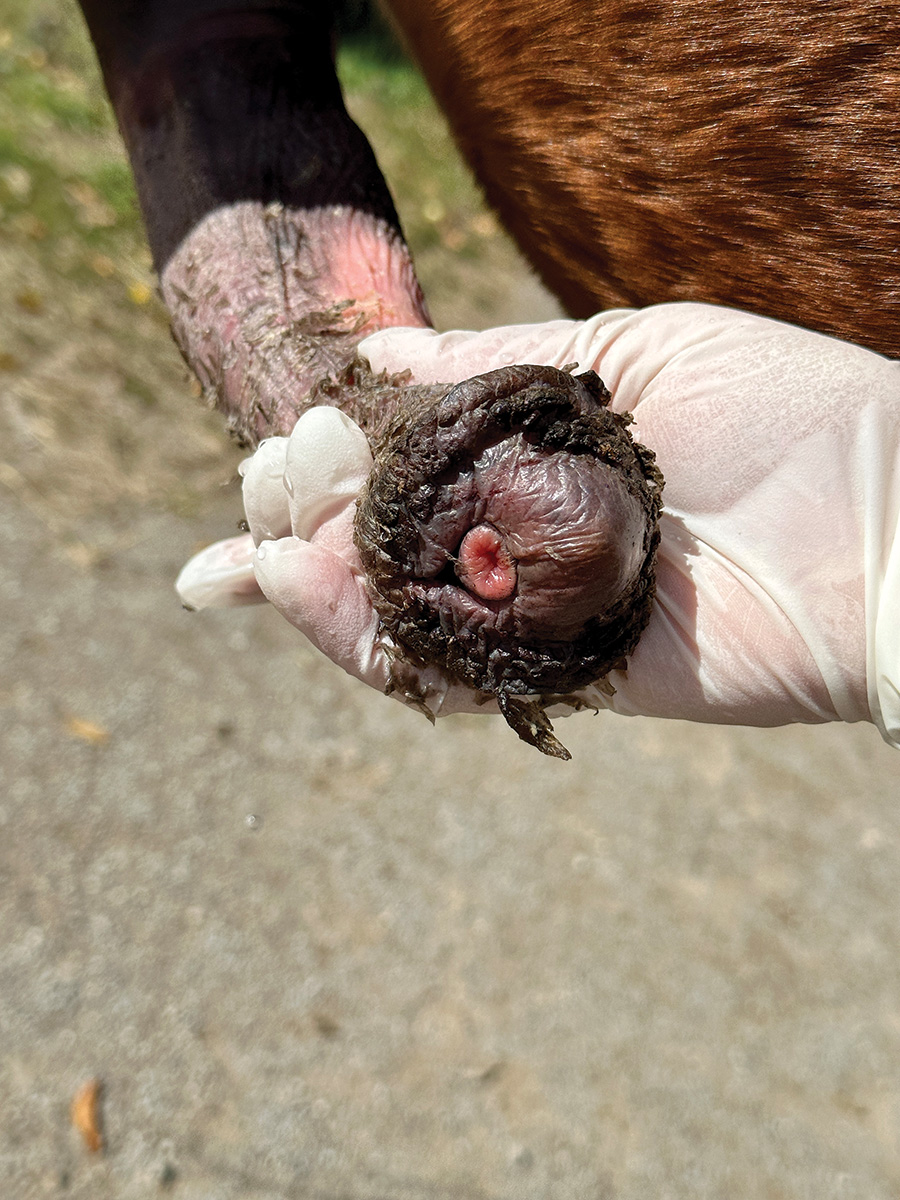
What if you never clean the sheath?
Some horses will develop massive beans that can make them uncomfortable. But one of the biggest concerns is not catching potential pathology, such as cancer.
Bacterial or fungal infections aren’t common in the penis or sheath, but Prell points out that gray horses especially are vulnerable to cancers in this area.

Fortunately, by cleaning the sheath once a year, you should spot any issues that can then be addressed as needed by your veterinarian.
Sheath Abnormalities to Look ForWhile cleaning the sheath, look for anything different or unusual on the penis or sheath. If you spot any of the following, notify your veterinarian promptly and schedule a visit so any issues can be addressed: ◆ Abnormal discolorations in skin ◆ Red, ulcerated, or raised areas ◆ Firm nodules ◆ Lesions or sores |
Be Prepared
Some horses relax so much during a thorough grooming session that they drop their penis, but in most cases, sheath cleaning is easier to do if the horse is sedated.
If you feel uncertain about the “how-to,” schedule a visit with your veterinarian. Prell suggests adding sheath cleaning to the agenda when your veterinarian comes for the annual dental exam, since the horse will likely be sedated for that.
If you’ve never cleaned a sheath before, watching the veterinarian do it provides a great opportunity for you to learn. Ask them to explain the process in detail so you’ll know how to do it the next time.
Horse owners may also opt to ask their veterinarian for a prescription for Dormosedan Gel®. Unlike sedation drugs administered intravenously, this product is given under the tongue, lasting long enough to sedate the horse for sheath cleaning.
Supplies you’ll need:
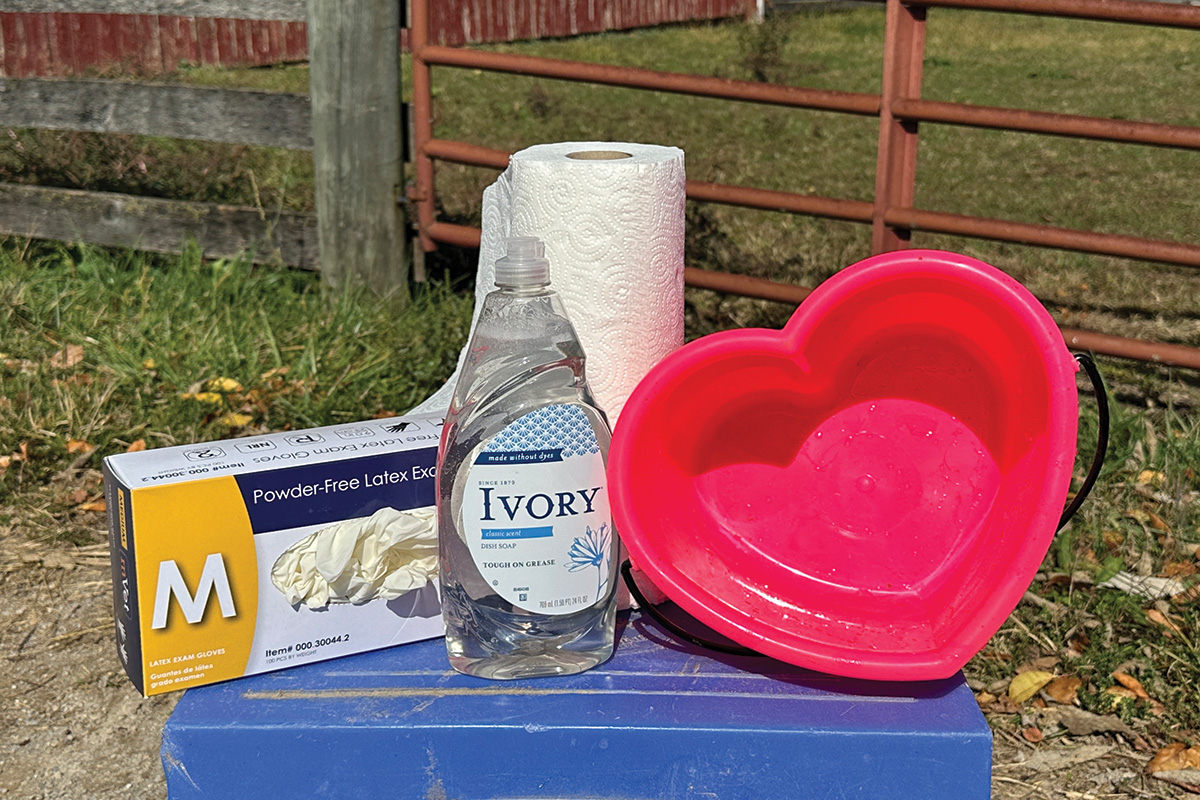
◆ Disposable gloves (obstetric exam gloves, which are longer than standard gloves, are even better)
◆ Bucket of warm water
◆ Commercial sheath cleaner or mild dish soap, like Ivory
◆ Cotton squares
◆ Paper towels
Prell explains that most smegma can be removed with warm water and cotton. If you want to use a product, she recommends a commercial sheath cleaner or mild dish soap, like unscented Ivory.
“Don’t use chlorhexidine, betadine, or any anti-bacterial soap,” she cautions. “Those can kill the good bacteria, and you can end up with a problem.”
Step-by-Step Sheath Cleaning
To keep the horse from moving around, tie him securely or have someone hold him.
Some horses can still react when sedated. Stay safe by standing well in front of his hind legs, and monitor his attitude throughout the process.
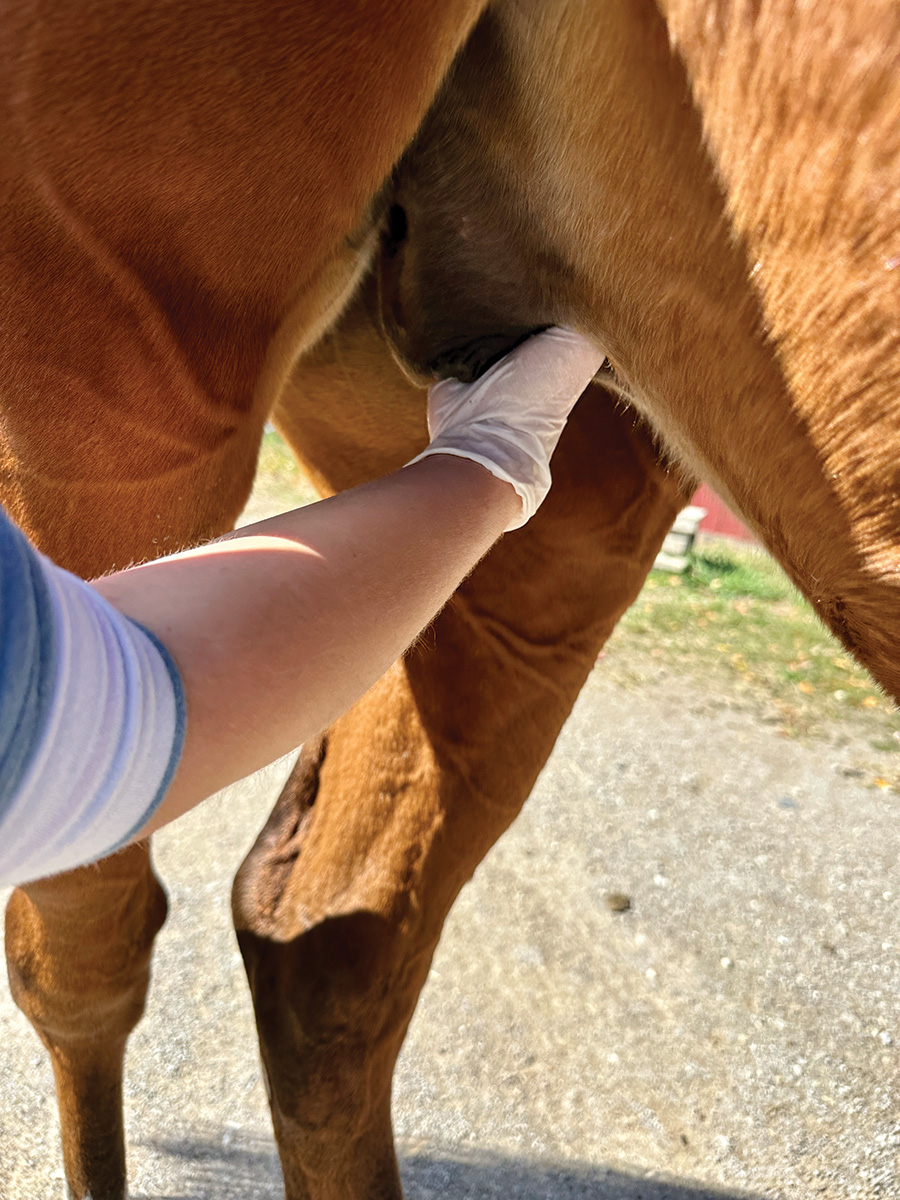
Let’s get started:
◆ Roll up your sleeves. Put on gloves.
◆ Apply a small amount of cleaner in one gloved hand.
◆ Pick up a cotton square dampened with warm water.
◆ Gently hold the extended penis with one hand and run the hand holding the cotton along the shaft of the penis to remove any flaky, peeling skin and loosen the smegma.
◆ Examine penis for any abnormalities (sores, lumps, et cetera).
◆ Once you’ve removed any loose skin and debris along the penis, check for a bean in the urethral fossa (the depression at the tip).
◆ If a bean is present, gently dislodge it with the tip of your gloved finger.
◆ After cleaning the penis, use additional damp cotton square(s) to remove any smegma or debris (dirt or shavings) inside the sheath.
◆ Use a paper towel to pat the penis dry.
◆ Discard used cotton, paper towels, and gloves in a lidded trash can.
Prell recommends cleaning the penis first and saving the inside of the sheath for last, since you can still do this even if the horse retracts his penis.
“You can still clean inside the sheath even if you don’t get a good view,” she notes.
Sheath Cleaning Don’tsThe following should never be part of cleaning the sheath: ◆ Spraying high pressure water into the sheath ◆ Grabbing the penis or handling it firmly ◆ “Scrubbing” the penis ◆ Disrupting normal bacteria by using harsh cleaners ◆ Cleaning too often (once a year should be enough) |
All done! You can now cross this task off your to-do list until next year.






